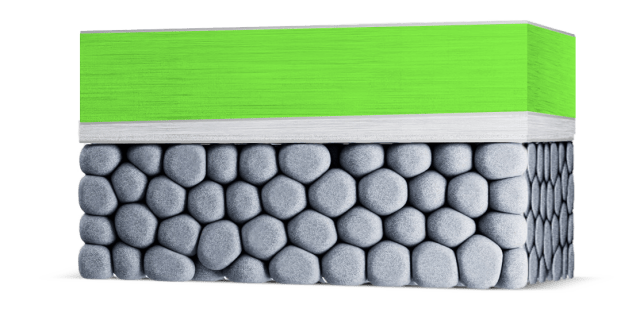Lithium-ion (Li-ion) batteries are the most dominant battery technology and will likely remain so in 2024. Researchers have continually improved the technology with greater performance and lower costs. However, the limited availability of key materials, such as lithium and cobalt, means the pressure is on to develop alternative battery chemistries. Researchers are rising to the challenge and will continue to do so in 2024.
One prime example of an alternative chemistry is sodium-ion (Na-ion) batteries. Sodium-ion batteries were discovered in the 1980s, but their true potential has only recently been apparent. Their design is similar to lithium-ion batteries, but with sodium in place of lithium as the main chemical ingredient. Sodium is widely available, low-cost and environmentally friendly, and Na-ion batteries are significantly cheaper than Li-ion. While there are some key challenges yet to be solved with Na-ion batteries, battery manufacturing giants such as China’s CATL and Sweden’s Northvolt have shown interest in the technology, a sign that it could soon be in widespread commercial use.
The battle between NMC and LFP cathodes will continue
The battle for dominance between two prominent lithium-ion cathode chemistries will continue in 2024. The West has historically favored nickel manganese cobalt (NMC) batteries, while China is dominant in lithium iron phosphate (LFP) batteries.
The majority of EVs sold in the West today use NMC cathodes, but LFP is starting to be a strong contender. Tesla is partly using LFP batteries, while Ford and Volkswagen have announced that they are considering offering EV models with LFP batteries.
Expect exciting things from solid-state batteries
Most of today’s lithium-ion batteries use liquid electrolytes, but in 2024 the quest for solid-state batteries may see exciting new milestones. Replacing the liquid electrolyte with a "solid ceramic" would be a phase change in more ways than one, unlocking batteries with higher energy density, faster charging and safety
.

Quantumscape is developing a solid-state battery with a ceramic separator (pictured as the thin middle layer above). (Image: Quantumscape.)
One company looking to solidify this possibility is California-based Quantumscape. Founded in 2010, Quantumscape has patented the design of a solid-state battery with an “anodeless architecture and proprietary solid ceramic separator” that the company claims is cheaper to manufacture, quicker to charge and longer lasting than classic Li-ion batteries. Quantumscape has partnered with German automaker Volkswagen and recently said it's working with an unnamed automotive launch customer to develop “an important vehicle proof of concept” for its commercial solid-state cells. While we probably won't see solid-state powered EVs as early as next year, automakers will be paying attention to the technology in 2024.
Battery recycling will heat up ( but some will run cooler )
As the EV industry matures, we’re seeing more and more EV batteries reach the end of their lives. Consequently, we’re seeing more and more interest in what to do with all of them. Battery recycling will be a big topic amongst researchers, manufacturers and policymakers in 2024.
The growing interest in battery recycling is driven by concerns about the availability of key materials and the environmental impact of discarded batteries. Recycling end-of-life batteries could soften that impact while providing a chance to repurpose valuable materials like lithium. However, battery recycling isn’t easy, and researchers are actively working to make the process safer and more efficient.
Despite that, battery recycling as a business is starting to heat up. Many companies have established battery recycling facilities in China, Europe, the U.S., Canada and elsewhere. Today there’s a lack of regulations, standards and guidelines for battery recycling, though progress is being made. The European Union recently released regulation concerning batteries and waste batteries with goals for battery recycling. In 2024, expect to see much more interest in developing and standardizing the recycling process.
2024 will be a banner year for batteries
The need for cleaner, more sustainable energy sources has shone a bright spotlight on batteries as the key for future energy infrastructure. Academia, industry and governments are eagerly seeking to improve this crucial technology while simultaneously making it safe and sustainable. The coming year looks like it will be promising on all counts—and engineers deserve much of the credit.










